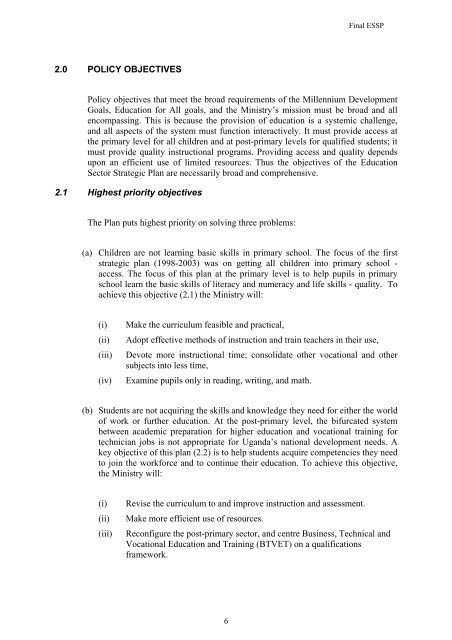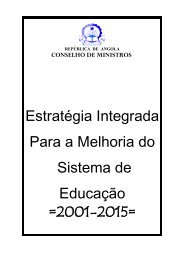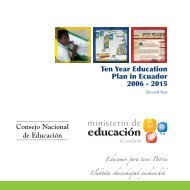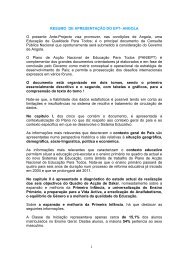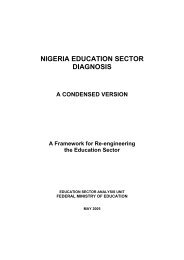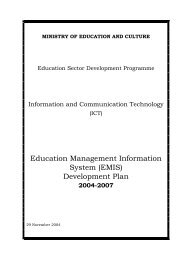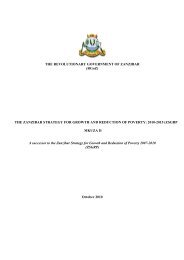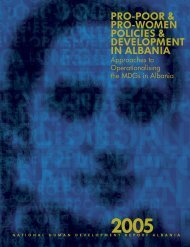Education Sector Strategic Plan 2004-2015 - Planipolis
Education Sector Strategic Plan 2004-2015 - Planipolis
Education Sector Strategic Plan 2004-2015 - Planipolis
Create successful ePaper yourself
Turn your PDF publications into a flip-book with our unique Google optimized e-Paper software.
2.0 POLICY OBJECTIVES<br />
Final ESSP<br />
Policy objectives that meet the broad requirements of the Millennium Development<br />
Goals, <strong>Education</strong> for All goals, and the Ministry’s mission must be broad and all<br />
encompassing. This is because the provision of education is a systemic challenge,<br />
and all aspects of the system must function interactively. It must provide access at<br />
the primary level for all children and at post-primary levels for qualified students; it<br />
must provide quality instructional programs. Providing access and quality depends<br />
upon an efficient use of limited resources. Thus the objectives of the <strong>Education</strong><br />
<strong>Sector</strong> <strong>Strategic</strong> <strong>Plan</strong> are necessarily broad and comprehensive.<br />
2.1 Highest priority objectives<br />
The <strong>Plan</strong> puts highest priority on solving three problems:<br />
(a) Children are not learning basic skills in primary school. The focus of the first<br />
strategic plan (1998-2003) was on getting all children into primary school -<br />
access. The focus of this plan at the primary level is to help pupils in primary<br />
school learn the basic skills of literacy and numeracy and life skills - quality. To<br />
achieve this objective (2.1) the Ministry will:<br />
(i) Make the curriculum feasible and practical,<br />
(ii) Adopt effective methods of instruction and train teachers in their use,<br />
(iii) Devote more instructional time; consolidate other vocational and other<br />
subjects into less time,<br />
(iv) Examine pupils only in reading, writing, and math.<br />
(b) Students are not acquiring the skills and knowledge they need for either the world<br />
of work or further education. At the post-primary level, the bifurcated system<br />
between academic preparation for higher education and vocational training for<br />
technician jobs is not appropriate for Uganda’s national development needs. A<br />
key objective of this plan (2.2) is to help students acquire competencies they need<br />
to join the workforce and to continue their education. To achieve this objective,<br />
the Ministry will:<br />
(i) Revise the curriculum to and improve instruction and assessment.<br />
(ii) Make more efficient use of resources.<br />
(iii) Reconfigure the post-primary sector, and centre Business, Technical and<br />
Vocational <strong>Education</strong> and Training (BTVET) on a qualifications<br />
framework.<br />
6


